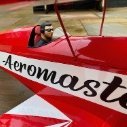-
Posts
1,023 -
Joined
-
Last visited
-
Days Won
2
Trevor last won the day on February 12 2022
Trevor had the most liked content!
Recent Profile Visitors
The recent visitors block is disabled and is not being shown to other users.
Trevor's Achievements
229
Reputation
-
Trevor started following Come on Weston Park !!!!! , RUB ON DECALS , Project mancave and 6 others
-
She’s quite highly thought of over here too!
-
Try it on a servo tester?
-
Toto, have you checked that that plinth doesn’t stop you from pulling your chair up close enough to the screens?
-
Congratulations Nick!
-

How to check Lipo Internal resistance.
Trevor replied to SIMON CRAGG's topic in All Things Model Flying
Better get your batteries changed then Ron 😇 -
Stunning!
-
Don’t worry Geoff, we all knew what you meant!🙂👍
-
Looks terrific Nick!👍
-
Toto, what battery do you use in your Tasman? I use 3300mah - 3500mah (because I have them) and the aerobatic performance is still very good. The battery bay is big enough that there’s no problem balancing it with these larger batteries and it might help a little bit in windier conditions. Trevor
-

So called " Driving aids" on new cars , help or hinderence ?
Trevor replied to Engine Doctor's topic in Chit-chat
Have you ever used this feature out of necessity Ron? I’ve only tried it out on the drive, just to check I could make it work. -

So called " Driving aids" on new cars , help or hinderence ?
Trevor replied to Engine Doctor's topic in Chit-chat
I agree with the first bit, but not the second. If you watch motorsport and see drivers walk away after horrendous crashes, it seems that there is no reason for anyone to be killed or seriously injured in a road car. By a car is another matter though so if some of these ‘driver aids’ help to protect pedestrians and cyclists maybe it’s right that we drivers can’t easily turn them off? -

So called " Driving aids" on new cars , help or hinderence ?
Trevor replied to Engine Doctor's topic in Chit-chat
We have a new Kia EV9 and, as per the OP, it is inclined to beep and bong at you a bit. The irony is that, if you look down at the dash to work out what the bonging is about, you then get bonged again for taking your eyes off the road! As I get more familiar with the car, this happens far less so the over speed warning is probably now just about on the credit side of being useful more than annoying - except, as others have said, when it gets the speed light limit wrong. The smart cruise control is very good. It responds very well to traffic pulling out in front of me, adjusting its response depending on whether the intruder is accelerating or not. I’ve had no unwanted activation of emergency braking other than when squeezing this large car into our garage. Lane keeping assist can give you an unwelcome nudge on country lanes but it’s never been intrusive enough for me to want to turn it off. So, on balance, I think that most of these features take a bit of getting used to, but I don’t think any of them are going to be a long term annoyance. And, of course, being electric, auto stop start, which I did find annoying, no longer applies 🙂 -
Personally, I’ve long since dispensed with such switches and just disconnect the battery instead. I appreciate that access issues may make this impractical in some cases - and the contacts in cheap extension leads won’t last forever either.
-
Back in my control line days, nobody seemed interested in using up expensive film on toy aeroplanes, so I had to recreate the memories of those days another way: https://www.bartonhewsons.uk/home/modelflying/sport/spectrekeydata.html
-
Robert, I attended what turned out to be the last LMA show at Duxford. As I recall, a jet crashed into a field on the other side of the M11. The crop was set alight and, because of the wind direction, the motorway was closed for some time due to smoke blowing across it. One can only guess whether this had anything to do with the LMA not returning to Duxford.



